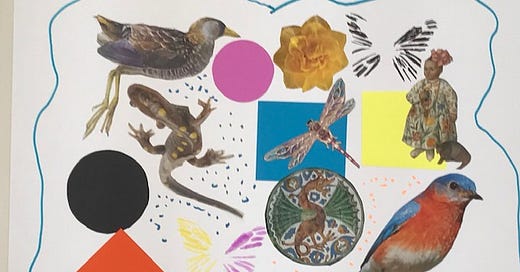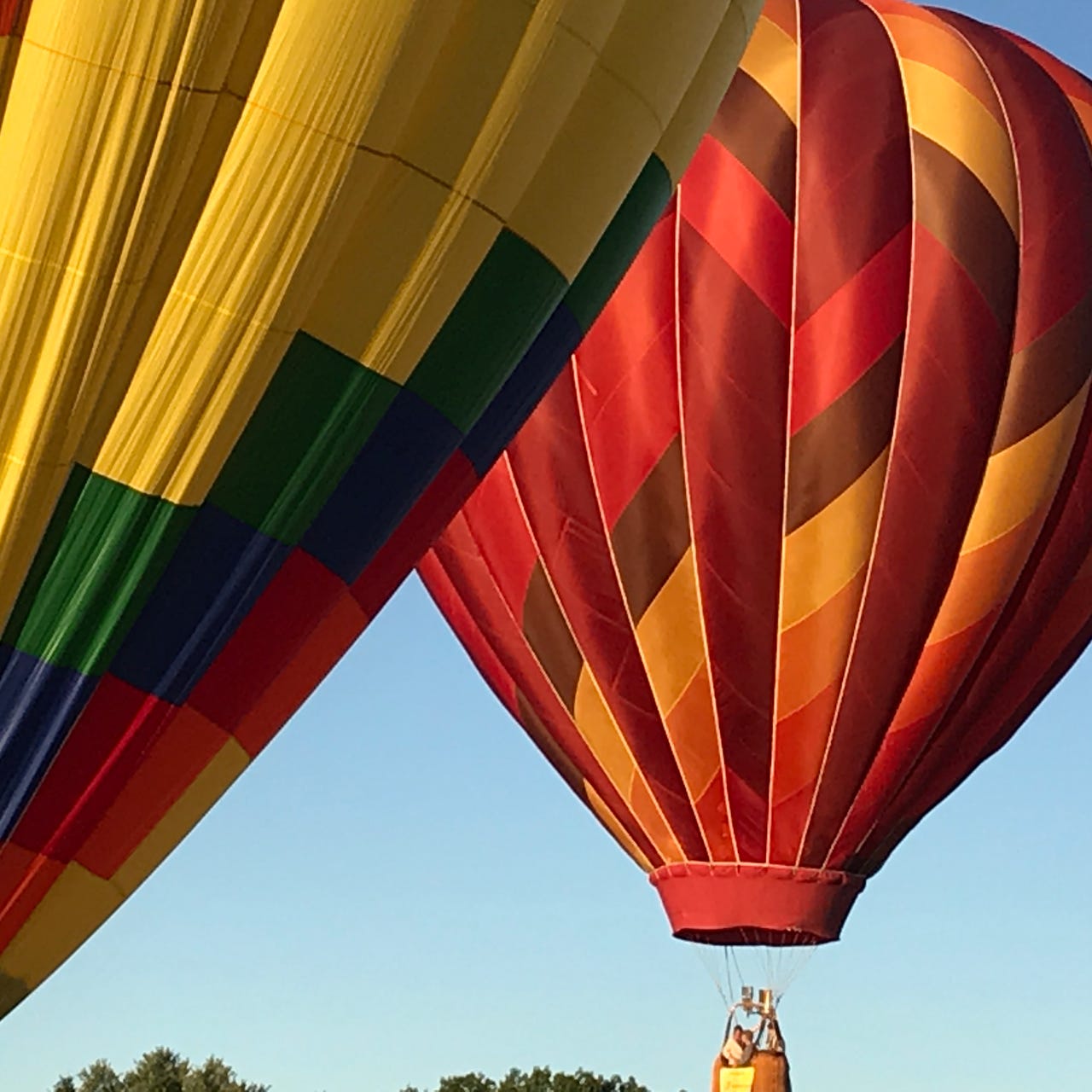Gathering the disparate pieces together, seeing how they fit, what patterns emerge. Not thinking too much or at all. Just watching the birds take their places and the lizard and the two butterflies and the jeweled dragonfly. I am making a new life in old age in two different places and, improbably, making a collage. Every three or four years, I run into a welcoming group space that allows me to make art against my better judgment. Under normal circumstances, drawing or painting, especially in a group, gives me the willies, makes me self-conscious. I watch the other people going about their creative expression purposefully. I watch them put a green line here and a blue shape there and I wonder…how do they know what to do? How do they know what will be appealing to the eye? It’s not at all the way I feel about words which walk right up brazenly to introduce themselves. I’m draconian, she says, pleased to meet you. And this is my old friend, feral. She’s been hoping to qualify for one of your sentences. Language is native to me, but color and line and design are foreign countries even though they are the syntax of the natural world we all live in. You’d think I’d never seen a sugar maple in autumn back in Stockbridge or a crabapple in the spring. I am capable of noticing beautiful things but I have always believed, apparently, that making art out of what I see is beyond me, that I am separate from it and can’t really touch it.
Frank and I take the plunge and sign up for an afternoon workshop that combines a teaching on the riparian landscape with an opportunity to make a collage and write a poem inspired by the art-making. First, I have to cozy up to the word riparian. I have never heard it before. Riparian refers to the wetlands adjacent to rivers and streams. In California, where water is precious and its limited availability always on people’s radar, riparian is a word in common usage. In the workshop, we hear about plants that grow in the wetlands. We sample a juice made from elderberry. We think about the threat to these habitats and then we stop thinking. We start looking outside at the world and inside at the way we are each a fractal of the whole of nature.
Scraps from magazines have been laid out haphazardly. Stencils, markers and paint are also available. I choose photographs of birds, a lizard, and a jeweled dragonfly. Then I add stencils of butterflies and colored paper shapes, a square, a triangle, several circles. The images begin to form an ecosystem. They interact with one another organically, symbiotically. The lizard depends on the green dragon plate and the black butterfly depends on the pink and yellow one. In the middle of the collage, the jeweled dragonfly rests on a blue square. It reminds me of the antique bug pins my Grandmother Teresa used to wear. The brooches covered the tops of her dresses, an insect-infested picnic laid out on her breasts.
My own personal history and the stories of my family that predate me are entering the frame alongside the California riparian landscape. The coastlines of the Danube and the Hudson and the Mississippi meet up with the shores of the American River in the Sierras. All rivers flow to the same sea. The art I am making arises out of all these sources and sources I can’t even identify. Elizabeth Brownrigg writes in her Substack Walking the Inspired Path…“I’ve set myself the challenge of becoming an artist of the day. I know it's important to choose my materials carefully, in the manner of a bowerbird, a basket weaver, a collage artist, a bouquet maker, a writer of a short story collection or a poetry chapbook or a novel.” I am a hunter-gatherer. In this way, everything that is present in the moment I create the collage is part of a flow that originates long before I decide to arrange the pieces. It takes the pressure off my art-making as an individual with all my particular foibles and failings and re-situates the creative process in the river of life.
***************************************************************************************************
Many Voices will appear on the last Sunday of each month and will feature contributions from the community of paid subscribers. All subscribers are now welcome to read Many Voices posts. In April, Many Voices will feature a piece by Paula Halpin, a retired magazine editor living in the beautiful Gatineau Hills of Western Quebec. Paula is grateful for finally having the time, perspective and opportunity to write and share stories.
Please consider upgrading to a paid subscription to support seventysomething, have access to the archives, and become a contributor to Many Voices. Your ideas are always welcome.
*************************************************************************************************************
Copies of my 2019 essay collection, Twilight Time: Aging in Amazement, are available directly from me (signed) or from Amazon or your local bookseller.
*************************************************************************************************************






I too am most comfy and cozy and at home with allowing words to find their way to the page. And recently, I took a course and began taking my poems and cutting them into pieces and then adding images here and there. It’s been a surprisingly delightful process. And I was even asked to share them in a community art show! So it really is never too late to find new ways to play and pray. Brava to you for finding such an engaging way to share your process.
Good for you. It takes courage to be vulnerable with an audience. A few years ago, much to my surprise, i started to experiment with art. It stated with abstracts with black sharpie on white paper. But I’m still self-conscious in groups, hard for me to get in the flow. But I like doing something without words.